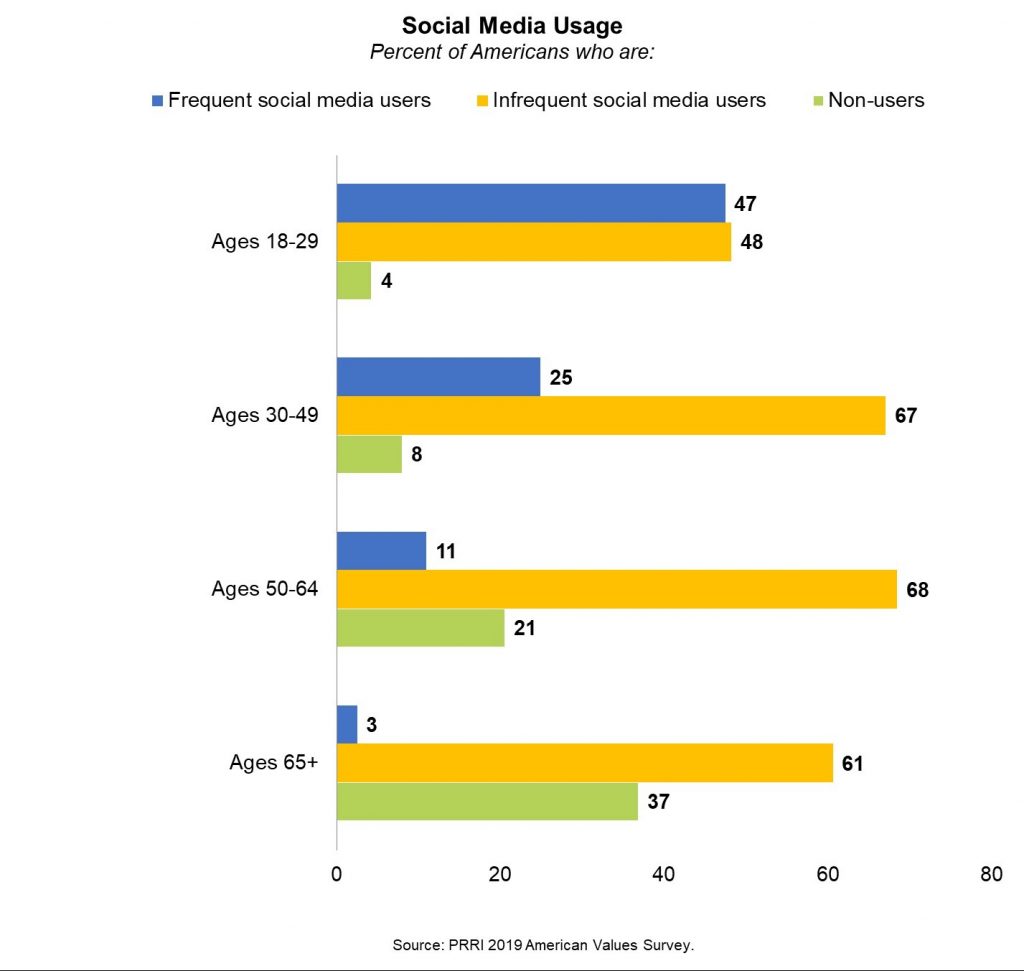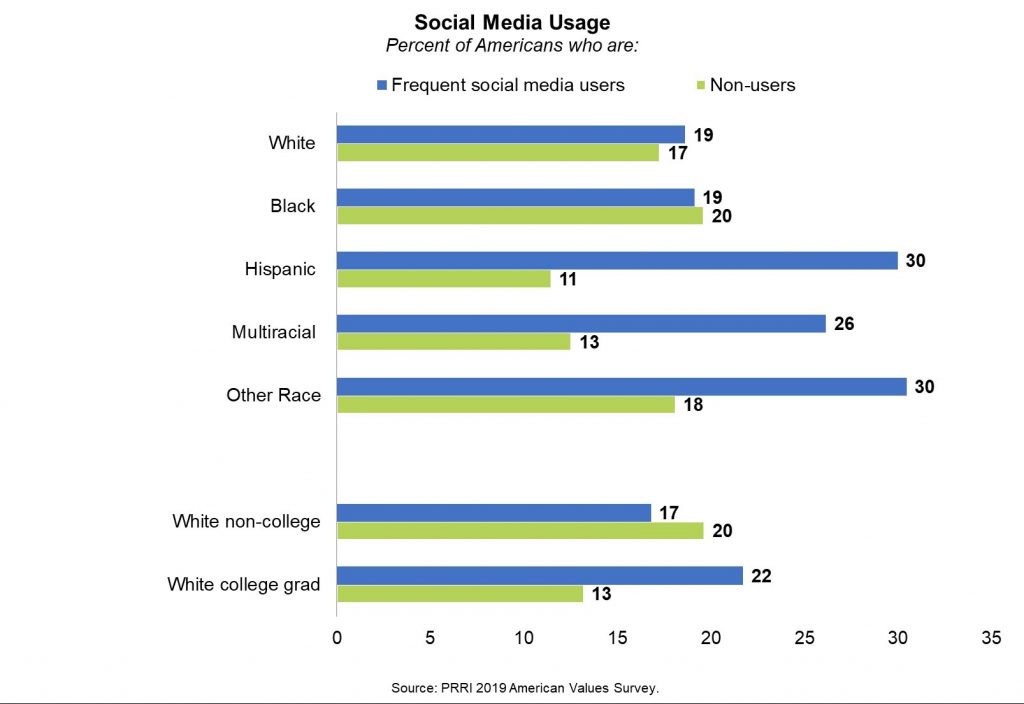Who Uses Social Media Most Frequently?

With widespread stay-at-home orders in the United States and around the globe as a response to contain the spread of the coronavirus, social media has become a powerful tool to remain connected, exchange ideas, and share information while in quarantine. This spotlight focuses on identifying who are the Americans more likely to frequently use social media sources.
The PRRI 2019 American Values Survey asked Americans what social media platforms they have used in the last month and how often they use each of these social media sources from “less than monthly” to “several times a day.” Most Americans report using Facebook (69%), followed by YouTube (59%), Instagram (35%), Pinterest (21%), Twitter (19%), Snapchat (18%), Linkedln (16%), and Tumblr (4%). Based on combined responses to all these questions, about one in five Americans are either very (6%) or somewhat (16%) frequent social media users. More than six in ten Americans are either very (32%) or somewhat (31%) infrequent social media users and only 16% of Americans report not using any of these sources at all.
Majorities across almost all demographics report using social media infrequently, while smaller percentages report using social media frequently or not using social media at all. Still, stark differences remain across all demographics of frequent social media users.
Age
Predictably, young adults (ages 18-29) are notably more likely to use social media frequently than other age groups. Nearly half of young Americans (47%) report using social media sources frequently, compared to one in four (25%) Americans ages 30-49, about one in ten (11%) Americans ages 50-64, and only 3% of senior Americans (ages 65 and older).
When evaluating Facebook and YouTube users separately — who make up most of social media users — majorities across every age group use Facebook several times a day, but young Americans are more likely to do so than senior Americans (65% vs. 51%). Young Americans (54%) are also notably more likely to use YouTube several times a day, compared to Americans ages 30-49 (39%), Americans ages 50-64 (24%), and senior Americans (21%).

Gender
American women (25%) are more likely than American men (18%) to use social media sources frequently and are also more likely to use Facebook several times a day (65% vs. 54%), but are less likely than men to use YouTube several times a day (30% vs. 45%).
Race and Education
Hispanic Americans (30%) are substantially more likely than white Americans (19%) and black Americans (19%) to be frequent social media users, but do not differ significantly from other racial groups (29%). White Americans without a college degree are less likely to be frequent social media users, compared to college-educated white Americans (17% vs. 22%).
Looking specifically at Facebook users, there are no differences among white, black, and Hispanic Americans except for Americans who identify with another race who are more likely than white Americans to use Facebook several times a day (70% vs. 60%); this is also true among YouTube users (47% vs. 29%). White Americans (29%) are also less likely than black Americans (51%) and Hispanic Americans (52%) to use YouTube several times a day. Surprisingly, white Americans without a college degree are notably more likely than college-educated white Americans to use Facebook (66% vs. 51%) and YouTube (36% vs. 19%) several times a day.

Religious Affiliation
Hispanic Protestants (34%) are about twice as likely as black Protestants (18%), white mainline Protestants (16%), white evangelical Protestants (15%), and white Catholics (13%) to be frequent social media users. About one in four Americans who identify with non-Christian religions (28%), Hispanic Catholics (26%), religiously unaffiliated Americans (26%), and other Christians (23%) are also frequent social media users. By comparison, among all religious groups, white Catholics (23%) are the most likely to be non-users.
There are no differences among religious groups who report using Facebook several times a day, but there are differences among YouTube users. Black Protestants (51%) are significantly more likely than Catholics (37%), religiously unaffiliated Americans (36%), white evangelical Protestants (30%), and white mainline Protestants (30%) to use YouTube.
Party Affiliation
Democrats (23%) and independents (23%) are more likely than Republicans (17%) to be frequent social media users. By contrast, there are no differences among partisans who don’t use any social media sources.
Interestingly, when evaluating Facebook and YouTube users separately, there are no differences among partisans who report using Facebook several times a day. However, Democrats (40%) are significantly more likely than Republicans (31%) to report using YouTube several times a day, while independents (38%) do not differ from Democrat and Republicans.

